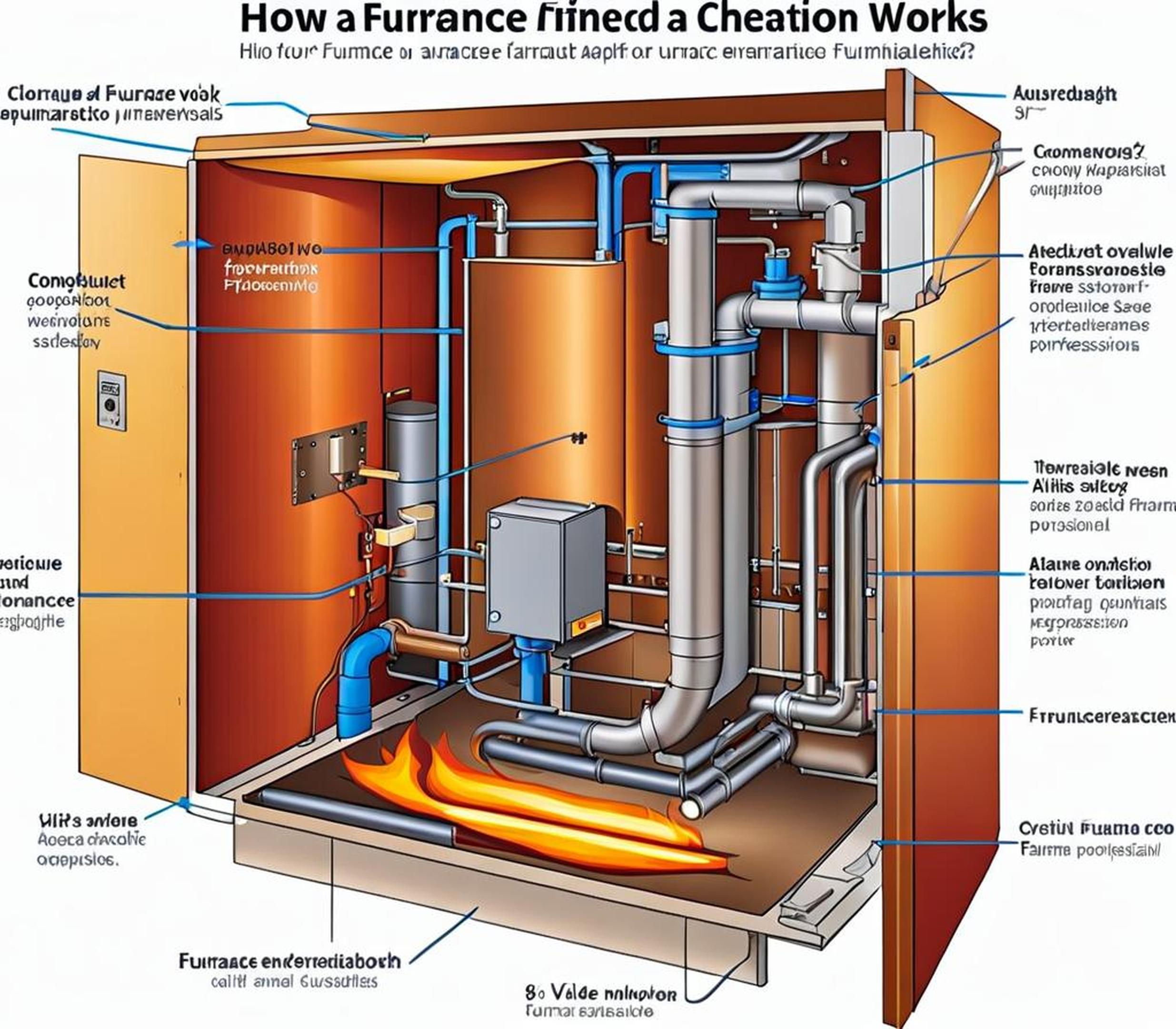When frigid winter weather arrives, homeowners rely on their trusty furnaces to keep their homes warm and comfortable. Furnaces heat air and distribute it throughout a house via ductwork. But how exactly does the magic happen inside these essential appliances? Understanding furnace operation helps DIYers perform basic troubleshooting and maintenance for peak efficiency and longevity.
We’ll demystify the inner workings of heating systems so you can keep your home cozy all winter long.
How Gas Furnaces Work
Gas furnaces provide central heating using a sequence of steps to safely deliver warm air.
This gas combustion and air circulation process continues until the thermostat is satisfied and shuts off the gas valve. The furnace will cycle on and off as needed to maintain comfort.

Key Furnace Components
Several important parts work in unison to make furnaces function properly. Understanding the role of each component helps troubleshoot issues.
Burner
The burner converts gas into flame through combustion. It consists of a set of gas jets made of durable ceramic or metal materials. The ports are strategically sized and shaped to optimize gas combustion efficiency. This ensures proper flame volume and pattern.
Blower Fan
The blower fan circulates air through a home’s ductwork during furnace operation. Its speed varies based on heating needs. A multispeed motor allows lower fan speeds for consistent warmth. The fan pulls in cooler air, forces it over the heat exchanger to pick up heat, and pushes out the warmed air.
Heat Exchanger
The heat exchanger is a metal chamber that transfers heat from burner flames to household air. It must withstand very high temperatures. Materials like aluminized steel or stainless steel efficiently absorb and conduct heat. As air passes over hot exchanger surfaces, it warms up before circulating through ducts.
Thermostat
The thermostat acts as the control center for the furnace. It senses indoor temperatures and signals the furnace to turn on when heat is needed. Thermostats are typically located in accessible central areas like hallways. Programmable and smart thermostats allow users to set customized heating schedules.
Gas Valve
The gas valve regulates fuel input to the burner in response to thermostat signals. It consists of two shut-off valves to control gas flow. One valve opens to allow gas to the main burner. The safety valve shuts off gas if the pilot light goes out, preventing fuel leaks.
Filter
Furnace filters trap dust, dirt, and other airborne particles from circulating. As air passes through, debris collects on the filter instead of accumulating in furnace components. Routine filter checks and changes every 1-3 months are crucial. A dirty filter can impact efficiency and indoor air quality.
| Main Furnace Components | Functions |
| Burner | Converts gas to flame through combustion |
| Blower Fan | Circulates heated air through ducts |
| Heat Exchanger | Transfers heat from gas flame to air |
| Thermostat | Senses temperature and controls furnace |
| Gas Valve | Opens/closes to control gas flow to burner |
| Filter | Traps dust and debris from circulating air |
Performing Basic Maintenance
Taking proper care of your furnace promotes efficiency and longevity. Here are some key maintenance tasks DIYers can perform themselves:
- Replace filters monthly – Clogged filters reduce airflow. Mark your calendar to change filters regularly.
- Annual professional maintenance – Hire an HVAC pro to inspect and tune up your furnace yearly.
- Clean blower compartment – Use a soft brush and vacuum to remove dust and debris annually.
- Inspect exhaust vent and ducts – Check for blockages or leaks that can impact safety and performance.
- Test safety controls – Confirm components like the flame sensor, pressure switch, and gas valve are working properly.
When to Call a Professional
While DIYers can perform basic furnace upkeep, some situations call for a trained HVAC technician:
- Signs of a serious issue like strange smells or sounds
- Inadequate heating, short cycling, or frequent furnace restarts
- A very old furnace or any components over 10-15 years old
- Major repairs needed beyond basic maintenance
A technician has specialized tools, testing instruments, and expertise to accurately diagnose problems. They can identify if repairs or replacement are needed.
Understanding what’s happening inside your furnace helps keep your home comfortable. Key components like the thermostat, burner, blower fan, heat exchanger, and gas valve work together to safely deliver warm air. Performing basic maintenance yourself along with annual professional care optimizes efficiency and longevity.
While furnaces may seem mysterious, learning the fundamentals allows DIY troubleshooting of minor issues. However, don’t hesitate to call in an expert for major repairs or replacements. With a properly operating furnace, you can rest assured the heart of your heating system is pumping out warmth all season long.
